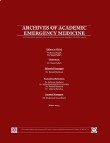Lobar Distribution of COVID-19 Pneumonia Based on Chest Computed Tomography Findings; A Retrospective Study
Computed tomography (CT) imaging has quickly found its place as a beneficial tool in the detec-tion of coronavirus disease 2019 (COVID-19). To date, only a few studies have reported the distribution of lunglesions by segment. This study aimed to evaluate the lobar and segmental distribution of COVID-19 pneumo-nia based on patients’ chest CT scan.
This was a retrospective study performed on 63 Iranian adultpatients with a final diagnosis of COVID-19. All patients had undergone chest CT scan on admission. Demo-graphic data and imaging profile, including segmental distribution, were evaluated. Moreover, a scoring scalewas designed to assess the severity of ground-glass opacification (GGO). The relationship of GGO score with age,sex, and symptoms at presentation was investigated.
Among included patients, mean age of patientswas 54.2±14.9 (range: 26 - 81) years old and 60.3% were male. Overall, the right lower lobe (87.3%) and theleft lower lobe (85.7%) were more frequently involved. Specifically, predominant involvement was seen in theposterior segment of the left lower lobe (82.5%). The most common findings were peripheral GGO and consol-idation, which were observed in 92.1% and 42.9% of patients, respectively. According to the self-designed GGOscoring scale, about half of the patients presented with mild GGO on admission. GGO score was found to beequally distributed among different sex and age categories; however, the presence of dyspnea on admission wassignificantly associated with a higher GGO score (p= 0.022). Cavitation, reticulation, calcification, bronchiecta-sis, tree-in-bud appearance and nodules were not identified in any of the cases.
COVID-19 mainlyaffects the lower lobes of the lungs. GGO and consolidation in the lung periphery is the imaging hallmark inpatients with COVID-19 infection. Absence of bronchiectasis, solitary nodules, cavitation, calcifications, tree-in-bud appearance, and reversed halo-sign indicates that these features are not common findings, at least in theearlier stages.
COVID-19 , pneumonia , viral , tomography , X-ray computed , lung injury
- حق عضویت دریافتی صرف حمایت از نشریات عضو و نگهداری، تکمیل و توسعه مگیران میشود.
- پرداخت حق اشتراک و دانلود مقالات اجازه بازنشر آن در سایر رسانههای چاپی و دیجیتال را به کاربر نمیدهد.


